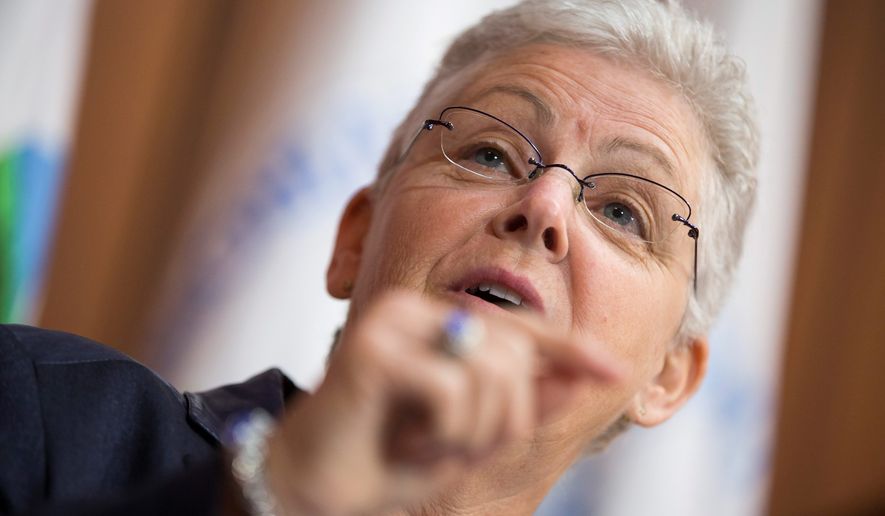Consumers will see significantly higher electric bills this summer, the federal government predicts, and there is mounting evidence that President Obama’s climate change regulations are at least partly to blame.
On average, Americans will spend nearly 4.8 percent more on electricity this summer than they did last year, according to a report from the Energy Information Administration. The increase will come from a 2.6 percent increase in electricity use and a 2.1 increase in the average price of retail electricity, the agency said.
Consumers are receiving the dim news as utilities take tens of thousands of megawatts of coal-generated power offline to comply with a host of EPA regulations and because of the sharp increase in cheap, domestic natural gas. Regulations such as the EPA’s mercury and air toxic standards already are having an effect on the power sector, utilities and analysts say, and the impact will be greater after the agency releases further limits on carbon emissions from power plants this summer.
Coal-fired facilities emit higher levels of carbon than those burning natural gas, though coal remains cheaper. The Energy Information Administration says coal power this year will cost $2.30 per million British thermal units compared with $3.86 for natural gas.
Still, EPA officials deny their regulations will carry negative consequences for consumers. In fact, EPA Administrator Gina McCarthy argued last week that average Americans ultimately will see lower electric bills as a result of Mr. Obama’s climate change agenda.
But analysts and Energy Information Administration research suggest the opposite, at least for the next decade.
” EPA completely ignores the fact that building new power plants is far more expensive than maintaining existing ones. We have a situation where EPA is forcing the closures of perfectly good and affordable power plants and trying to replace them with new, more expensive plants. This means higher electricity rates for Americans,” said Travis Fisher, an economist with the Institute for Energy Research, a Washington think tank that has been skeptical of the EPA’s work under Mr. Obama.
“EPA’s claim that its regulation will lower electricity bills is misleading,” Mr. Fisher said. “In reality, electricity rates will skyrocket under the proposed rule. The only way power bills will go down is if EPA succeeds in making Americans use substantially less electricity than we currently do. It’s like telling people that their grocery bill will go down if they’re forced to stop buying the food they need to feed their family.”
Last month, the EIA released data showing that the administration’s carbon rules for existing power plants — known as the Clean Power Plan — will result in a spike in electricity prices. From 2020 to 2025, the EIA said, prices will be 3 percent to 7 percent higher as a result of the plan, though the agency does predict prices in many parts of the country to drop by 2030.
EPA officials acknowledge a short-term bump in electric bills. Ms. McCarthy told business leaders last week that consumers can expect their bills to jump by a few dollars a month immediately after the Clean Power Plan takes effect.
But over time, she said, Americans’ bills will drop by as much as 8 percent.
“Not all carbon reduction strategies actually cost money,” Ms. McCarthy said. “We will not lose sight, as we do this final rule, with both the cost and benefits, particularly as it relates to the costs of electricity pricing for consumers and for businesses.”
The expected increase this summer will be relatively small. According to EIA figures from 2013 — the latest data available — the average American monthly electric bill was $111.08. The projected 4.8 percent increase would add about $5.33 to a household’s bill each month, or about $16 over the course of June, July and August.
Obama administration critics blame the EPA regulations, but some market analysts say a hot summer is the culprit. Indeed, EIA researchers predict that Americans will run their air conditioners more than they did last year.
The projected increases “most likely have something to do with the weather. Traditionally, price rates have been fairly flat year over year,” said Farah Saeed, principal consultant for energy and power systems at Frost & Sullivan.
The effects of Mr. Obama’s climate change regulations on electric bills could grow substantially as more coal power sources are shut down.
Utility industry leaders say about 73,000 megawatts of coal-fired generation will be shut down from 2010 to 2020 because of the EPA’s mercury and air toxic rules and other regulations.
If the Clean Power Plan goes into effect as scheduled, nearly 50,000 additional megawatts will be taken offline, the EPA predicts. Industry insiders say the true figures will be much higher.
On the global front, Mr. Obama and other members of the Group of Seven leading industrialized nations recently committed to cutting worldwide greenhouse gas emissions by at least 40 percent by 2050 and phasing out fossil fuels by the end of the century.
Coal advocates say the president, as well as heads of state around the world, are making a grave error in thinking they can sustain economic growth without fossil fuels.
“Suggesting our world can move forward successfully without the use of fossil-fuel-based energy, including coal, would be ludicrous if it weren’t so dangerous,” said Laura Sheehan, senior vice president for communications at the American Coalition for Clean Coal Electricity. “Our leaders, especially those in the G-7, must face facts and have the gumption to pursue common-sense energy policies that prioritize the very real needs of domestic and international populations for centuries to come.”
• Ben Wolfgang can be reached at bwolfgang@washingtontimes.com.




Please read our comment policy before commenting.